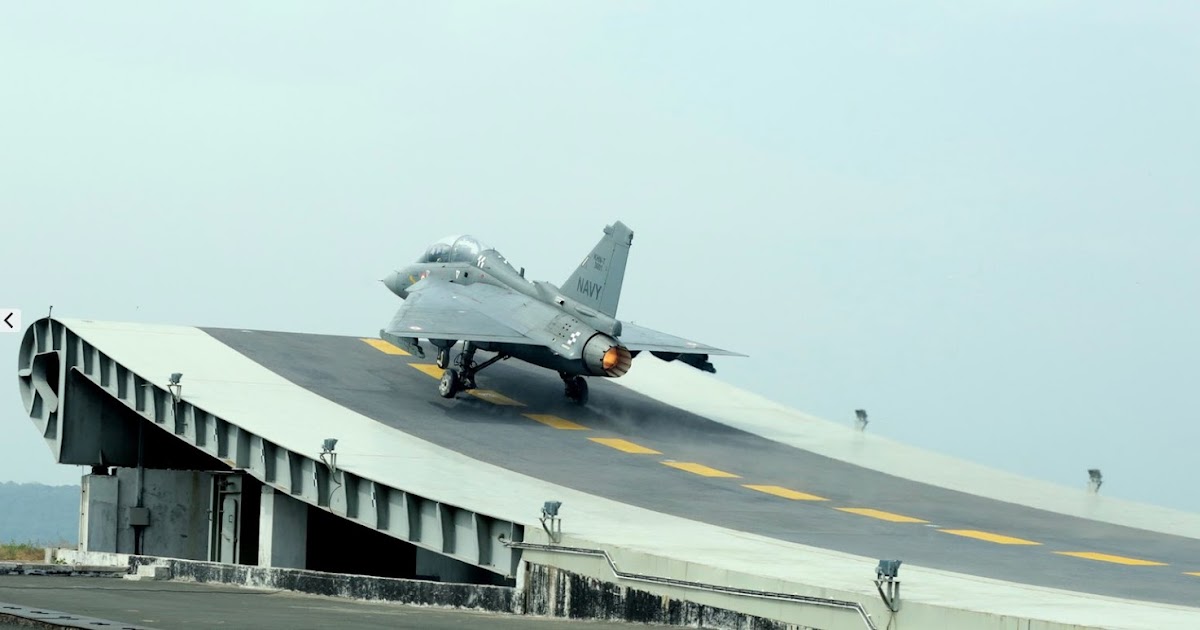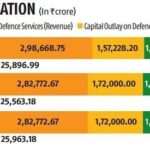
A little factoid debunks any claim that defense is adequately funded: the defense budget, including pensions, has fallen for the first time in decades to less than 2% of GDP.
By Vikas Gupta
Defence News of India, 3 Feb 23
In various statements in public speeches and through press releases, Defense Minister Rajnath Singh has spread the message that the armed forces are adequately funded. He says significant increases in defense allocations ensure that the army’s manpower, weaponry, equipment and infrastructure are at the levels needed to face two and a half adversaries – viz. China, Pakistan and internal unrest in hotspots such as Kashmir and Manipur. But Mr Singh’s efforts are belied by a simple fact: the defense budget, including pensions for 25-30 lakh veterans, has fallen for the first time in decades to less than 2% of proceeds gross domestic (GDP).
This might be a reasonable level of funding for a country whose leaders have used diplomacy to cultivate a cordial and cooperative regional environment. But not for a country whose second most influential leader has defied his most powerful rivals by threatening to retake disputed territory. Threatening China and Pakistan in this way, and then drastically reducing military funding, shows a remarkable confidence in Beijing and Islamabad that is not evident in anything they say or do.
Meanwhile, many statements about defense allowances are intended to deceive, to give the common citizen the impression of a security that is, in fact, ephemeral and which our powerful adversaries can end whenever they please.
“Defence gets Rs 5.94 lakh crore in the 2023-2024 budget, a 13% jump from the previous year,” a Defense Ministry statement said. It does not say that this comparison is with last year’s budget allocations. However, when we compare the 2023-24 allocation with a more recent figure, such as the revised estimates for this year, the defense budget increase turns out to be just 1.5%.

Similarly, the Ministry of Defense announces, “Capital expenditure on modernization and infrastructure development has increased to Rs 1.62 lakh crore; [which is] an increase of 57% since 2019-2020. This glosses over the fact that compared to last year’s capital budget allocations of Rs 1.52 lakh crore, this year’s capex allocation represents an increase of just 6%. This is a completely insufficient increase, given the current macro-fiscal environment of high inflation and a falling rupee. None of this is mentioned in the budget documents.
Ultimately, defense capital allocations are a subset of capital investment spending in the Union budget. In the 2023-24 budget, capital investment expenditure rose sharply for the third consecutive year by 33%, to Rs 10 lakh crore, or 3.3% of GDP. While defense capital allocations have reached Rs 1,62,600 crore, they are still not quite in line with Union capital allocations.
A second problem is the apparent lack of consideration with which capital expenditure funding is distributed among the three departments. Allocations should be made on the basis of assigned roles for each service, with these functions deriving from a National Security Strategy (NSS) formulated at the highest planning levels.
For example, if the NSS explicitly states that India should assume the role of safeguarding the global commons (freedom of navigation and overflight, piracy and maritime terrorism) in the Indian Ocean Region (IOR), this would lead to conclusions on the type of warships the Indian Navy would need; what objectives and targets the Indian Air Force might need to hit and hit; and what amphibious assault capability would be essential for such a task. The NSS would also determine whether the Indian Army would go it alone, or in partnership with other navies, or in partnership with IOR friendly navies and alone on the land borders of the Himalayas. This would develop decisions regarding which communications satellites we would need to position, which long-range missiles should be deployed in support, and which adverse developments might require looking to partner nations to counter. In other words, if India were to take on an expeditionary role in the IOR, it would require an entirely different strategic and tactical focus, which in turn would require different equipment and training profiles.
Based on these calculations, each service would determine what equipment it should acquire – whether sourced from partner nations, locally manufactured, or leased when the equipment is actually needed for training or operations. This would require a global procurement schedule, with each department allocating funds to match procurement timelines. For example, if it were deemed necessary to develop the capability to dominate the southern Indian Ocean, the planning staff might find it essential to acquire two 65,000 ton aircraft carriers as well as six submarines nuclear-powered attack. This would generate a payment schedule, which would require the Ministry of Defense (in coordination with the Ministry of Finance) to make available to the Navy the resources necessary to make the annual payments.
A similar calculation would determine allocations to the Army and Air Force for equipment needed to achieve NSS goals. Once all of these payments – they are referred to as “committed commitments” – are made, the new Tri-Service Headquarters, under the direction of the Chief of the Defense Staff (COS), would determine the priorities for purchase other weapons and equipment. Since payments for weapons and defense equipment are usually made over a period of 5 to 10 years, payment installments are largely predictable. However, as the graph shows, the three services are traditionally allocated capital budgets that fluctuate unpredictably.
A third feature evoked by the Union budget is the need to complete the reform of the budget documents of the government of the National Democratic Alliance. Starting with reducing the number of grant applications from around six to seven, Mr. Arun Jaitley, Mr. Manohar Parrikar, Ms. Nirmala Sitharaman and now Mr. Rajnath Singh have turned what was once an unreadable hodgepodge into sets of ‘allocations that are bound by logic. Even so, there is still work to be done: For unknown reasons, the Coast Guard budget, which falls under the Navy for peacetime coastal security and wartime operations, is part of the Department’s budget. of Defense (Request No. 19), rather than the department revenue budget (Request No. 20) and the department investment budget (Request No. 21). Similarly, the budget of Jammu & Kashmir Light Infantry, which is a regular infantry regiment, is also included in the ministry’s budget. The Border Roads Organization (BRO), formerly under the Ministry of Road Transport and Highways, has been appropriately attached to the Ministry of Defence, given the strategic nature of the roads it builds and the difficult terrain over which she operates. However, its budget allocations are scattered haphazardly across the entire budget; it would be wise to allow it its own grant application, or to consolidate its allocations in a coherent manner. Similarly, it would be wise to further consolidate the budget of the Defense R&D Organization.
Breakdown of the Capex budget between departments
|
Financial year |
Service investment budget (crore rupees) |
Capex allocation (in percentage) |
||
|
Army |
Marine |
Aviation |
||
|
|
|
|
|
|
|
2014-15 |
68,311 |
19.5% |
32.5% |
48% |
|
2015-16 |
71,675 |
28.5% |
28% |
43.5% |
|
2016-17 |
83,673 |
37% |
26.5% |
36.5% |
|
2017-18 |
87 137 |
34.5% |
25.5% |
40% |
|
2018-19 |
89,812 |
33% |
26.5% |
40.5% |
|
2019-20 |
104 135 |
28% |
29% |
43% |
|
2020-21 |
131,697 |
22% |
33.5% |
44.5% |
|
2021-22 (Actual) |
121,987 |
20.5% |
37% |
42.5% |
|
2022-23 (RE) |
134,073 |
24.5% |
36% |
39.5% |
|
2023-24 (BE) |
147 184 |
25.5% |
36.5% |
38% |
(Source: budget documents)






